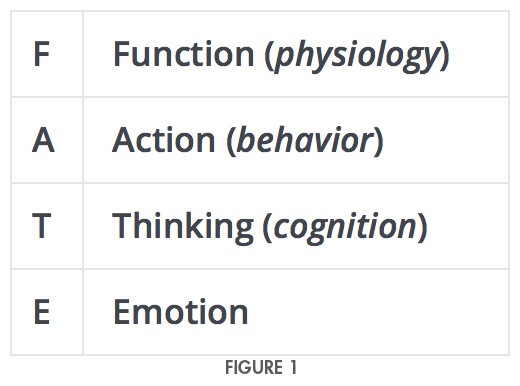The Berent Treatment Method is the result of constructing a therapy model designed for the specific needs of social anxiety sufferers rather than attempting to fit the problem into the already existing narrow confines of a single modality. This method has been developed and organized since 1978 and is the result of working with thousands of individuals.
As a starting point, it is imperative to identify if the social anxiety sufferer has “initiative” for treatment and improved mental health. “Initiative” does not mean ability. It means the motivation to start up. When the sufferer does not have initiative, treatment begins with parents. This is for the dependent of any age—6, 16, or 26. This is because of avoidance-dependence syndrome, which is usually quite ingrained. In such cases, before the primary patient is integrated directly into therapy, parents are taught a nurturing methodology to empower vs. enable their dependent.
Treatment consists of technique and core work. Technique is the paradoxical process of learning to “make friends” with adrenaline. Individuals learn to channel adrenaline into empowering energy. The fight-or-flight response and its adrenaline are the dynamics that drive the physical symptoms of panic and an overall fear of being noticeably nervous. Core work is the process of helping the individual resolve the emotions of shame, embarrassment, humiliation, and anger that exist in their “reservoir” or past.
Psychotherapy integrates the domains of physiology, behavior, cognition, and emotion. Think of F.A.T.E. (See Figure 1)
 In the initial sessions, the focus is on orientation to the treatment process, diagnostics, collection of important data, and exploring patient’s therapeutic goals and expectations. Each therapy session is an experience in the “mind gym.” The therapeutic process is very directive because the goal is to teach “healing.”
In the initial sessions, the focus is on orientation to the treatment process, diagnostics, collection of important data, and exploring patient’s therapeutic goals and expectations. Each therapy session is an experience in the “mind gym.” The therapeutic process is very directive because the goal is to teach “healing.”
The patient fills out a multi-modal life inventory that organizes pertinent information. This process is the beginning of “attachment” or connecting. Social and performance anxiety sufferers have learned the defense mechanism of detachment, or disconnecting, from anxiety-driven thoughts, emotions, and physical sensations, as well as avoidant and phobic behaviors. Based on the clinical reality of “you have to feel that which you are going to control,” the multi-modal inventory is an orientation to the process of attachment which is crucial for the development of what I refer to as a “high-performance mind,” the simple definition of which is the development and sustaining of proactive energy to achieve health and happiness in whatever form that may manifest. In addition, the inventory is an important tool to help the patient with a beginning awareness of how the excessive internal critical script was learned.
The patient is then introduced to the concept of mind states. This is based on the psychology of transactional analysis. There are five mind states. All have specific energy. All are important. The issue for the social anxiety sufferer is synergy. The baseline for social anxiety is imbalance. A “before” and “after” ego-graph is presented. The goal is to make therapeutic objectives as concrete and scientific as possible. Strategies are taught to facilitate “mind state” development.
Each patient has their own learning curve. This curve is based on variables including length and severity of the problem, motivation, emotional as well as intellectual intelligence, the ability to integrate new concepts, the reality of therapeutic expectations, expressive ability, degree of obsessive worry and panic, substance dependence, if any, and the readiness to face fear.
A behavioral hierarchy of anxiety challenges is created. The patient developmentally faces these challenges, with support, insight, and implementation of the adrenaline control technique.
Based on the Sarno methodology for treatment of physical symptoms, patients are guided into the process of learning how they repressed the core emotion of anger and rage. This is crucial to healing as this recycled, often non-conscious energy, drives the symptoms that have caused the patient to initiate treatment.
Patients are guided into the process of journaling in between formal sessions. This enhances therapeutic productivity because it organizes critical content for patient and therapist, and facilitates attachment to crucial dynamics. This multifaceted treatment approach for social and performance anxiety empowers the patient to access and sustain the use of under-used neural pathways. Pharmaceutical strategies and self-regulation technique are integrated into treatment when indicated.
To gain a more in-depth understanding of the Berent Method for treatment of social and performance anxiety, click here to listen to patients in our free library of clinical interviews. These interviews appear to be the most evidence-based clinical success reported directly from real patients suffering from social anxiety and performance anxiety. These interviews go beyond simple testimonials. If you listen closely, you will gain important insight into the healing process.
Treatment with Jonathan Berent, LCSW, is available via Skype or telephone anywhere and in person in the Great Neck, New York, office of Berent Associates. Sessions are 30 minutes and cost $260 per appointment. Insurance is available on an “out of network” basis only. To ensure a productive learning curve and the proper mind set, sessions should take place 3 times a month in the first phase of therapy.



